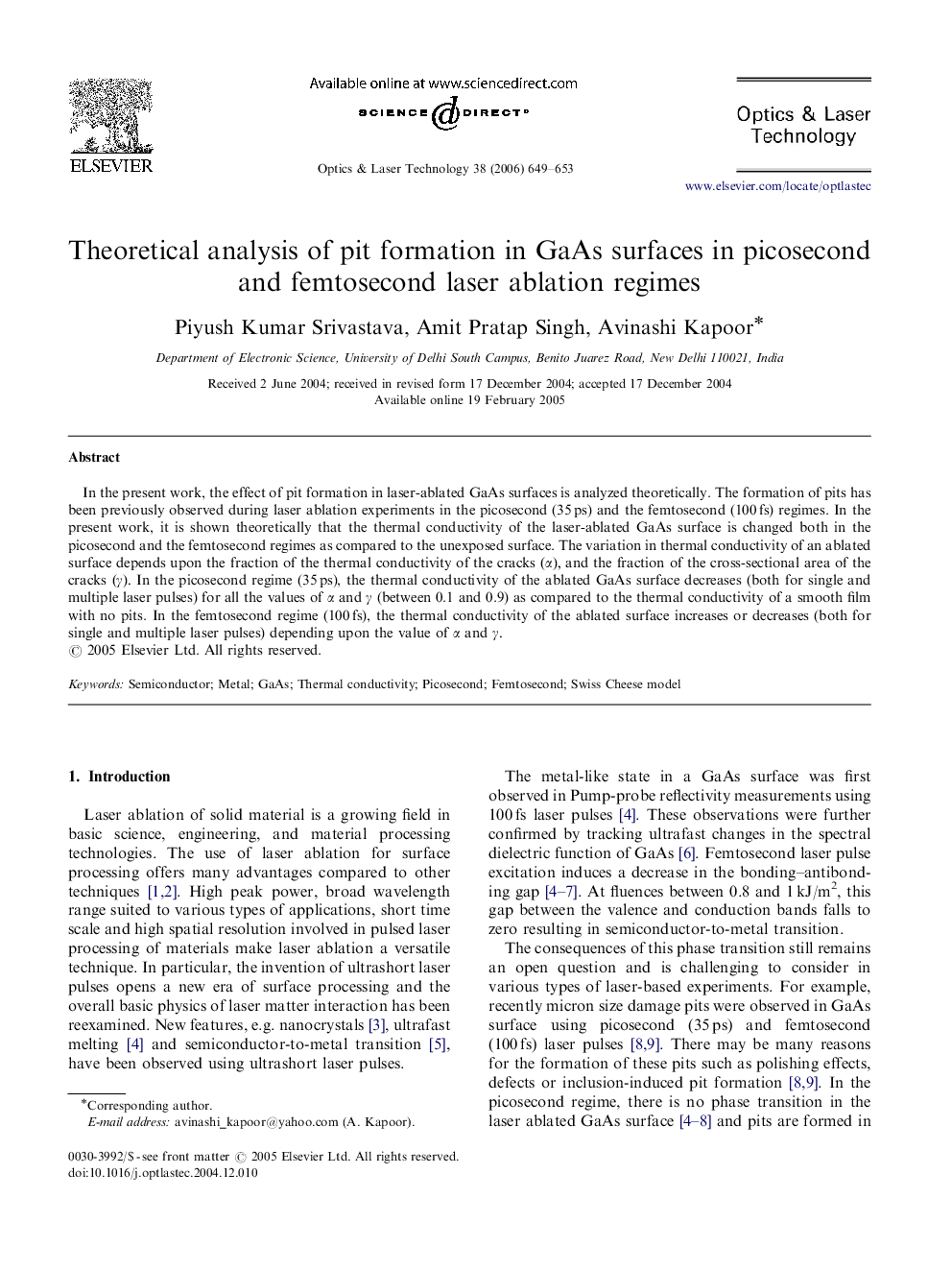| Article ID | Journal | Published Year | Pages | File Type |
|---|---|---|---|---|
| 739795 | Optics & Laser Technology | 2006 | 5 Pages |
In the present work, the effect of pit formation in laser-ablated GaAs surfaces is analyzed theoretically. The formation of pits has been previously observed during laser ablation experiments in the picosecond (35 ps) and the femtosecond (100 fs) regimes. In the present work, it is shown theoretically that the thermal conductivity of the laser-ablated GaAs surface is changed both in the picosecond and the femtosecond regimes as compared to the unexposed surface. The variation in thermal conductivity of an ablated surface depends upon the fraction of the thermal conductivity of the cracks (α)(α), and the fraction of the cross-sectional area of the cracks (γ)(γ). In the picosecond regime (35 ps), the thermal conductivity of the ablated GaAs surface decreases (both for single and multiple laser pulses) for all the values of αα and γγ (between 0.1 and 0.9) as compared to the thermal conductivity of a smooth film with no pits. In the femtosecond regime (100 fs), the thermal conductivity of the ablated surface increases or decreases (both for single and multiple laser pulses) depending upon the value of αα and γγ.
